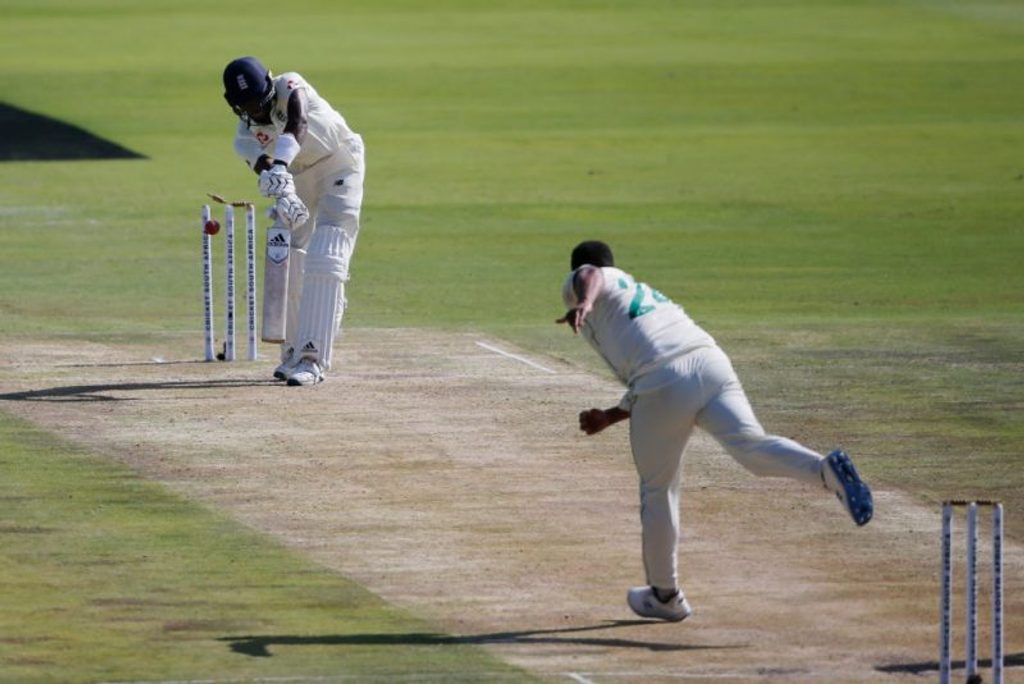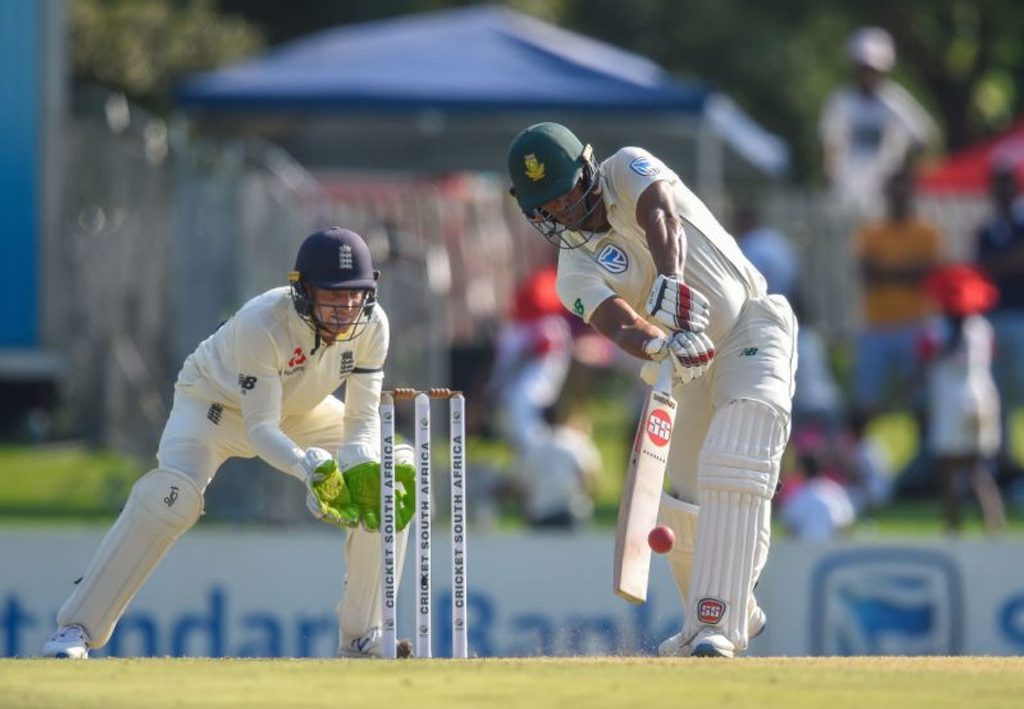
Dan Gallan analyses a trademark performance from Vernon Philander which helped South Africa take the first Test against England at Centurion.
…… | W….. | …… | …… | …… | ...1.. | W….. | …... | 1…2. | …1.. | ...44. |
.1…. | …… | W..2.. | .W
.
Vernon Philander delivered 14.2 overs in England’s first innings, bowled eight maidens, conceded 16 runs and took four wickets.
With the new Kookaburra in his hand he opened with five consecutive maidens. By relentlessly hitting a good length just outside off stump, he forced England’s top order to weigh up the option of leaving or prodding. Can you stomach the humiliation of being castled after shouldering arms? Fine, tentatively hang your bat out and watch the ball nestle in a catcher’s mitts behind the stumps. Rory Burns opted for the latter option.
Joe Root was the first Englishman to hit a run off Philander after 34 balls bowled. The visiting skipper had decided the best way to counter the movement off the seam was to walk out of his crease and meet the challenge head on.
[breakout id=”0″][/breakout]
It was a bold approach, but a foolish one. The next time the two faced each other, Root again moved out of his crease but this time Philander saw him coming, dragged his length back a touch, and this time Root was forced to continue walking, a tickle behind underlining the one-sided nature of the contest.
Sam Curran was the first Englishman to hit Philander for a boundary when he did so in his 11th over. Back to back fours – one flashed past point, the other edged past gully – meant Philander, by now into his third spell, had finally conceded double digit runs.
[caption id=”attachment_133339″ align=”alignnone” width=”800″] Vernon Philander bowled Jofra Archer to end England’s first innings[/caption]
Vernon Philander bowled Jofra Archer to end England’s first innings[/caption]
Kagiso Rabada would see to Curran, denying Philander his revenge, but Big Vern would have the final say in the innings, bowling Jofra Archer to bundle the visitors out for 181 in 53.2 overs, 103 runs behind in a game they would lose by 107.
…2.. | …... | 11…. | …… | .41… | ..11.2 | ….1. | …..1 | .12… | ..2… | …… | …… | …… | …… | …..1 | …4.1 | 41…. | …… | …… | …..4
By the eye-watering standards he set in the first innings, Philander’s figures of 0 for 35 from 20 overs make for sorry reading. But he still bowled eight maidens, as many as he mustered in the first and as many as England’s bowlers managed between them in South Africa’s second dig.
Philander’s first tilt on the fourth and final morning of the Test began with four maidens. He bowled 30 consecutive balls to Burns, only conceding a run off the final one.
When Philander was replaced by Anrich Nortje, Burns must have felt like his bondage was over. A short ball got big on the left hander who couldn’t help himself and followed through with his pull shot. The ball looped off the top edge and found its way to Rabada at mid-on. Nortje added to his wicket tally, but it was Philander who had broken Burns’ resistance.
35 runs, 6 fours, 81 balls, 139 minutes
When Philander walked to the wicket in South Africa’s first innings the score read 198 for 6. Dwaine Pretorius’ fightback was ended by Curran three overs into the final session of day one and Quinton de Kock needed a helping hand.
Philander will admit that his career average of 24.63 does not accurately reflect his ability with the bat and a delicious drive off Curran to get off the mark hinted at his unfulfilled potential.
A 47-run partnership helped nudge the score to the brink of 250 before De Kock fell on 95. Now as the senior statesman, Philander served as the tail’s big brother and was the last man to fall early on day two.
46 runs, 4 fours, 68 balls, 100 minutes
South Africa had already hit the fast-forward button by the time Philander entered the scene before lunch on day three with 177 on the board and seven wickets down. But with Rassie van der Dussen, nightwatchman Nortje and Pretorius all falling inside four overs, some repair works were required.
[caption id=”attachment_133340″ align=”alignnone” width=”800″] Vernon Philander played a key role with bat as well as ball[/caption]
Vernon Philander played a key role with bat as well as ball[/caption]
A 43-run partnership with de Kock helped nudge the score beyond 200 and the lead past 300. Once again serving as the tail’s big brother, Philander was the last to fall but not before squeezing 52 more runs out of the remaining two wickets.
During South Africa’s tour of England in 2012, a local journalist questioned Philander wicket-taking ability and wondered if he would pose a threat to the home side that had reached number one in the world.
“Stats don’t lie,” was Philander’s pithy comeback. He didn’t need to say more. He took 5 for 30 at Lord’s later that summer as Graeme Smith wrested the Test mace away from Andrew Strauss.
[breakout id=”1″][/breakout]
Philander’s stats from the first Test at SuperSport Park in Centurion were not enough to earn him the Player of the Match award. That accolade went to de Kock for his belligerent 95 in the first innings.
[breakout id=”2″][/breakout]
But it was Philander who was the star of this show. Every contribution he made with either bat or ball had an impact on the result.
10 matches, 51 wickets average 17.6, strike-rate 37.2, 4 five-wicket hauls, best innings bowling 6-42, best match bowling, 9-75
Those are Philander’s numbers at Newlands in Cape Town, the venue for the second Test of the series. They’ll one day name a stand after him here in the shadows of Table Mountain where no one else has mastered the conditions with the same ruthless efficiency.
Not that Big Vern will worry himself with all that. For now, he’ll just let the ball, and the stats, do the talking.








